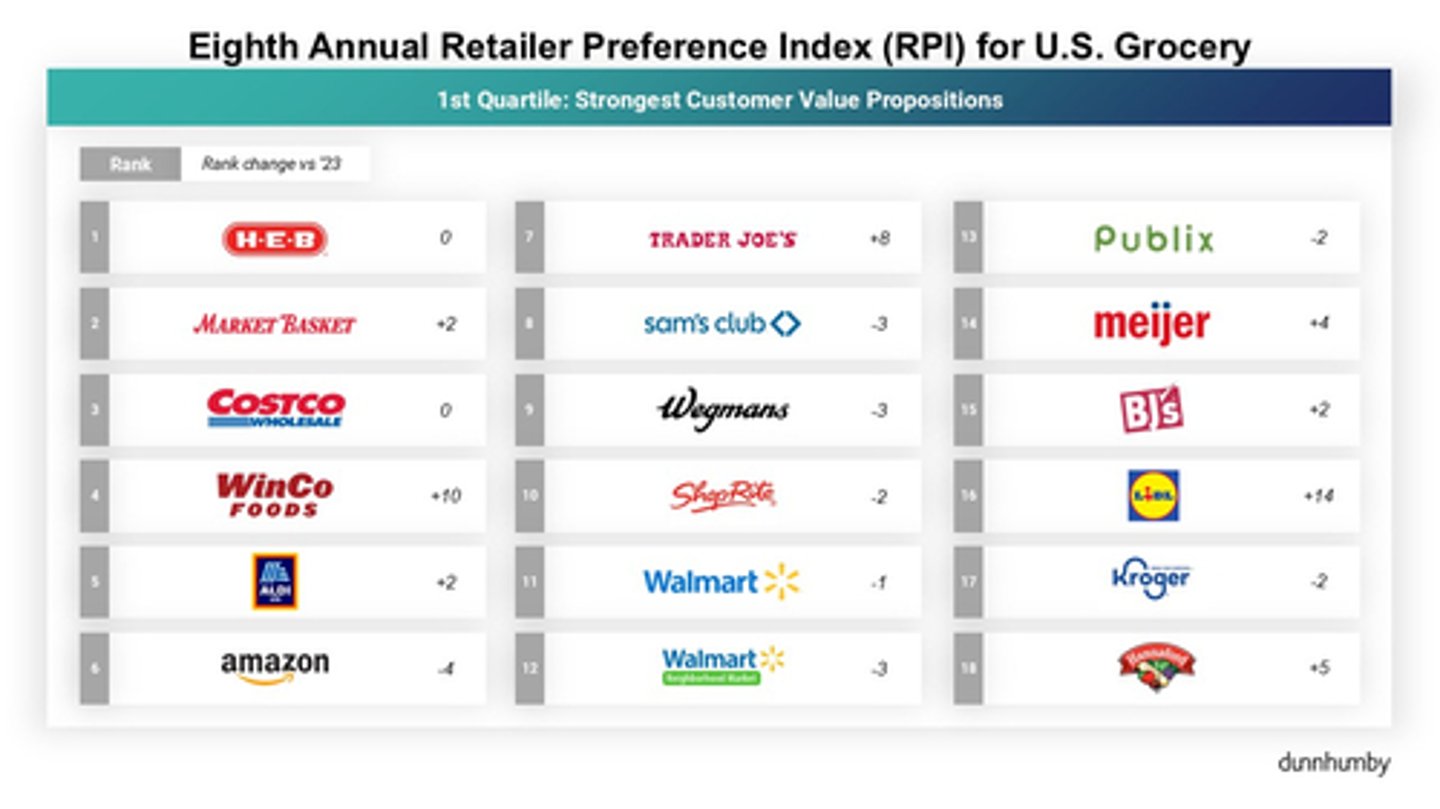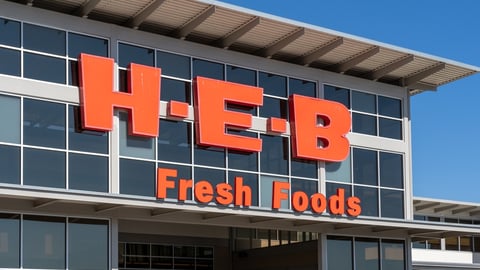H-E-B Ranked As Top Grocer In dunnhumby Survey
Three regional grocers along with one of the nation’s top sellers of private label products sit atop the annual Retailer Preference Index (RPI) from dunnhumby.
For the third time in four years, Texas-based regional supermarket H-E-B is ranked No. 1. Rounding out the top five are Market Basket (2), Costco (3), WinCo Foods (4), and Aldi (5).
“Since releasing the first U.S. Grocery RPI eight years ago, retailers and shoppers have weathered COVID, supply chain disruptions, agricultural shortages due to climate impacts, and a prolonged period of high food inflation that have reshaped shopping behavior and how Americans perceive the grocery retail environment,” said Matt O’Grady, dunnhumby's president of the Americas. “Clients across the grocery retail sector understand that market success is dependent upon saving shoppers money and implementing innovative pricing technologies to maintain their customer base.”
Three of the top four retailers are regional supermarkets, with the 15 additional retailers in the first quartile made up of a cross-section of non-traditional, national banners in club, discount, online, and superstore formats.
H-E-B has cemented itself as a top grocer in recent years, with dunnhumby noting the grocer’s ability to deliver a combination of better savings, quality, shopping experience, and assortment.
Three grocers focused on private label — Aldi, Trader Joe’s, and Lidl — were ranked in the first quartile of the RPI.
Lidl ascended 14 spots to move up to the top quartile for the first time, taking the 17th position. Lidl saw modest improvements in a few areas: prices, digital, and operations. This, coupled with the uptick in the importance of savings and downtick in importance of quality, explained their jump.
Additionally, Trader Joe’s, a former top U.S. Grocery Retailer in the RPI, stopped its slide and improved its ranking from the 15th position to the eighth position by being ahead of the market on quality while being about average at savings. Trader Joe’s, the second-highest-ranked retailer for quality, leads other quality-first retailers in savings perceptions.
Kroger and Albertsons banners suffered ranking declines, with particularly steep declines in states where there were ongoing, high-profile court cases regarding their proposed merger. Both King Soopers (Kroger banner) and Albertsons declined in many areas of the value proposition, which may be a sign of the negative halo cast by the merger news headlines.
“This year’s RPI shows that the fundamentals still apply as H-E-B has proven year over year. Any format can win,” said O’Grady. “The first step is to understand your customers and how customers perceive you. Secondly, prioritize efforts to save your customers money that is consistent with your positioning. And finally, use the RPI as a framework to help you determine where you should invest and where you should make tradeoffs.”
The RPI, a nationwide study that examines the approximately $1 trillion U.S. grocery market, ranks grocers using a combination of financial results with customer perception, including a survey of more than 11,000 U.S. consumers.





